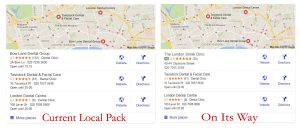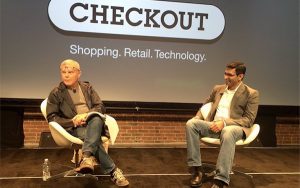No two relationships or contacts can be treated in the same way. Whether you’re a real estate agent, a lawyer, or a small business owner, you need to regularly reach out to your contacts for your business’ sake. Staying top-of-mind with your relationships is key in maintaining them and creating a strong network. And in order to stay top-of-mind with your contacts in the most effective way you need to create the right message to send to these groups.
That being said, you’ll need to break out those relationships into groups or segments in a way that can make your following-up process a bit more manageable and organized. How can you segment these contacts to communicate with them in the right way? Most importantly, how can you break these contacts out accordingly to build a solid network that drives more business and referrals? Got your contacts ready?
Start the segmenting…
Break it down now

This first graph defines our 4 key segments for your relationships, broken out by how much effort you need to put into each group of contacts. Confused? Don’t worry, we’ll explain further…
1. Your Players
These are going to be a large portion of your contact list, probably the segment with the most amount of people categorized within it. That doesn’t mean they are any less important than your other contacts, they’re just the largest group that may require less effort in keeping in touch with them. Think about this group as peripheral friends and past co-workers and clients that you want to maintain a relationship with because of their network and how they could potentially help you in the future.
2. The Stars
Next up, the stars in your life. This is a slightly smaller group of your network than the Players and can offer up a little bit more in the value that they can give to you and your business. If you’re looking at it from a sales cycle perspective, these are the relationships that could be new leads or contacts that may not be quite ready for a purchase but who you need to keep on your radar.
3. Champions
Not quite at the top, but still an important sphere of people in your network, your champions require some more time and effort than your Stars and Players. These are the relationships that you can turn to on a regular basis for referrals. These could also be hot leads ready to buy! These contacts need a little more attention from you, simply because they’re more valuable when it comes to what they’re worth to your business.
4. The Legends
Last but not least, your legends. These are your most valuable contacts and relationships. You should only have a few legends on your list simply because it would be impossible to put legendary effort into all of your relationships. These are the clients making a purchase right now or a major influencer in your network that consistently brings in the best leads and referrals. This group of contacts are the people you regularly keep in contact with because of how great an impact they have on you and your business.

Prioritize
The reason we break it down like this is pretty simple; it all comes down to Dunbar’s Number. The British anthropologist Robin Dunbar suggested that there’s a very specific number of people with whom we can actually maintain meaningful social relationships with. The number? 150. Now to some of you, that may sound like a lot of people. But to those folks with over a thousand people in their contact list, this may seem like far too few relationships to cut your list down to.
So, we return to our two basic protocols…will every one of those 1000 contacts bring you referrals or money for your business?
You can only realistically do so much with your time, effort, and attention span. Segmenting your 150 (or so) contacts into these groups is necessary for your own sanity, otherwise you start to spread yourself too thin and become far less effective in gaining those client referrals and leads. Once you segment, you know how to expend your effort and who exactly you should be spending the most (or least) effort on. Simply put, it’s a value to effort ratio. The more value each contact can give you, the more effort you should be putting into the relationship.
The great thing about this breakdown is that it’s not set in stone. These segments are meant to work within your sales or business cycle in a way that makes sense for you. The couple getting ready to put an offer on a house you’re selling? They fit right into the Legends segment because they need the most time and attention from you at the moment. Once the papers are signed and they’re all moved in, you may move them to Champions or Stars. Not because they’re any less important, but because they need a little less attention, yet could still be a great source for gaining new client referrals — all the more reason to stay in touch and keep top-of-mind with them.

You’ll find the value
If you have 10 minutes to reach out to some of the contacts in your list, how many can you effectively reach based on their value to you? For your Players, this could mean taking the 10 minutes to put together and send out a relevant email newsletter to 20-40 of your past clients that may want a quick update from you and your business. On the other hand, if you have 10 minutes to contact some of your Legends, you may want to put in some more effort, leaving you with only enough time to reach out to 2 contacts with a hand written note or a quick phone call to check in with each contact.
You’re forced to take a closer look at your sales cycle and how your clients move through it and more importantly, how you spend your time throughout the cycle as well. Do you need to call every single one of your contacts on a weekly basis? Probably not, but that may be more impactful for a hot lead Champion looking to make a big purchase. Your time and effort is valuable, assess where it counts the most and work through your sales cycle accordingly.
Go forth and segment
Create actionable ways to impact each of these segments that will foster your relationship for future referrals, or for moving them through the sales cycle. Whether you’re sending a relevant article to a few of your Champions or introducing two of your Legends to each other to make a meaningful connection, you can make an impact simply by portioning out your time based on the value to you. Going above and beyond for the key contacts in your network has proven time and time again to help when it comes to gaining more referrals and in the end, bringing in new business.
Business & Finance Articles on Business 2 Community(93)







